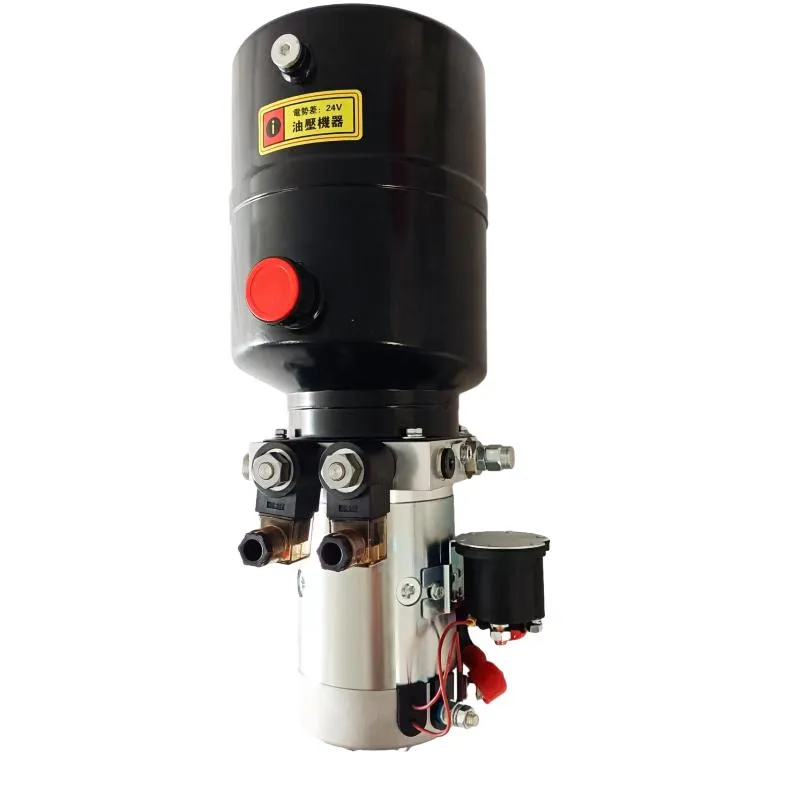Oct . 20, 2024 10:32 Back to list
high quality rod seal hydraulic cylinder
High-Quality Rod Seal for Hydraulic Cylinders Ensuring Optimal Performance
Hydraulic cylinders are essential components in various industrial applications, from manufacturing to construction. They harness the power of compressed fluid to produce linear motion, making tasks easier and more efficient. However, the overall performance and longevity of these hydraulic systems heavily depend on the quality of their components, particularly the rod seals. In this article, we will explore the significance of high-quality rod seals and how they contribute to the efficiency and reliability of hydraulic cylinders.
Understanding Rod Seals
Rod seals are critical components in hydraulic cylinders that prevent hydraulic fluid from leaking out of the cylinder. They are positioned in the gland of the cylinder, where the piston rod exits. A properly functioning rod seal not only maintains pressure within the system but also protects the hydraulic fluid from contamination by external elements. The most common materials for rod seals include elastomers, polyurethane, and thermoplastics, each chosen for their respective durability and compatibility with various fluids.
Importance of Quality
Investing in high-quality rod seals is crucial for several reasons
1. Leak Prevention The primary function of a rod seal is to prevent hydraulic fluid leaks. High-quality seals fit snugly around the rod, maintaining a tight seal even under varying pressures and temperatures. This significantly reduces the risk of fluid leakage, ensuring that the hydraulic system operates effectively.
2. Extended Lifespan Rod seals made from superior materials are more resistant to wear and tear. They can withstand extreme conditions, such as high pressures and temperatures, which can lead to seal degradation. By using high-quality rod seals, industries can expect a longer lifespan for their hydraulic cylinders, reducing maintenance costs and downtime.
3. Contamination Protection In hydraulic systems, contamination can lead to serious performance issues and damage. Quality rod seals help keep external contaminants, such as dirt and moisture, out of the hydraulic cylinder. This protection is essential for maintaining the integrity of the hydraulic fluid and the overall health of the system.
high quality rod seal hydraulic cylinder

4. Operational Efficiency When rod seals function correctly, hydraulic systems operate more efficiently. Minimizing fluid leakage leads to optimal pressure levels, enabling the system to perform its tasks effectively. This efficiency translates into better energy consumption rates and overall productivity in industrial settings.
5. Safety Hydraulic systems operate under high pressures, and failures can lead to catastrophic results. High-quality rod seals lower the risk of hydraulic failure, thereby enhancing safety in industrial environments. This reliability is paramount, as it protects not only the machinery but also the workers operating them.
Selecting the Right Rod Seal
Choosing the right rod seal is a vital aspect of hydraulic cylinder maintenance and performance. Factors to consider include
- Material Compatibility Different hydraulic fluids and temperatures demand specific seal materials. Ensuring compatibility will guarantee optimal performance and longevity. - Size and Fit Seals must be manufactured to precise dimensions to ensure a proper fit. Poorly fitted seals can lead to leaks and reduced efficiency.
- Design Features Some high-quality seals come equipped with advanced design features, such as lip configurations or dynamic compensation, which enhance their sealing abilities and performance.
Conclusion
In conclusion, high-quality rod seals play a pivotal role in the functionality and reliability of hydraulic cylinders. By preventing leaks, extending the lifespan of components, and protecting against contamination, these seals significantly enhance operational efficiency and safety. For industries reliant on hydraulic systems, selecting the right rod seals is an investment that pays off through improved performance and reduced operational costs. As the demands of various sectors evolve, the importance of innovative and durable rod seal designs will only continue to grow, solidifying their status as a cornerstone of hydraulic technology.
-
Fork Lift Power Units - Hebei Shenghan | Efficiency, Reliability
NewsJul.13,2025
-
1.5-Ton Turbocharged Cylinder-Hebei Shenghan|Hydraulic Solution,Energy Efficiency
NewsJul.13,2025
-
Auto Hoist Power Units-Hebei Shenghan|Efficiency&Industrial Lifting
NewsJul.13,2025
-
Double Acting Power Units-Hebei Shenghan|Hydraulic Solutions,Industrial Efficiency
NewsJul.13,2025
-
1.5 Ton Lifting Cylinder 70/82-40-290-535 - High-Performance Hydraulic Solution | Hebei Shenghan
NewsJul.13,2025
-
Fork Lift Power Units - Hebei Shenghan | Efficiency&Reliability
NewsJul.13,2025
